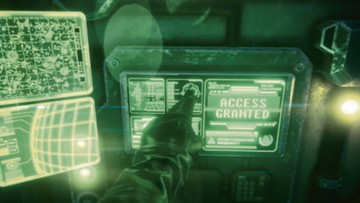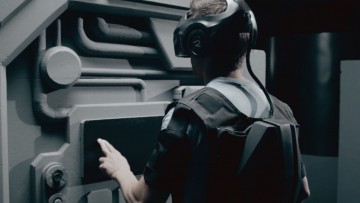Theme parks tend to bill the big rollercoasters as their main attraction. Monster rides such as the Tower of Terror at Dreamworld in Australia or the Colossus at Thorpe Park offer sensations you just can’t get at home on a video console. But no theme park can rely only on rides. Consumers’ stomach acid won’t permit it. Which is why there is such an intensive drive in the industry to create attractions which offer a rather more gentle, serene and cerebral appeal.
Immersive experiences offer a way for visitors to disappear into a new world. Tom Sawyer’s Island at Disney World’s Magic Kingdom was the original venue, designed by Walt himself. There’s the river Tom and Huck boated down, a fort island and the sounds of a blacksmith working. Visitors feel they’ve slipped inside the book, and can play at being frontier settlers exploring Harper’s Mill and Injun Joe’s Cave.
Some of the best immersive experiences include the Fortress Explorations at Tokyo DisneySea in Japan, a Renaissance-era world featuring an alchemy lab, planetarium, replica of Leonardo da Vinci’s flying machine and lavishly rigged 16th-century ship. Cars Land at Disneyland and the Castle Dungeon tour at Warwick Castle, where actors put members of the public on trial in front of a hanging judge, are two outstanding examples.
4D and augmented reality
To up the appeal of immersive experiences, theme parks are turning to technology. 4D cinema is like 3D cinema, but with chairs that rock, vibrate and tilt, combined with smells, lasers, wind and water sprays. The 4D Ice Age attraction at Alton Towers, which opened in 2012, is one of the most highly regarded. Viewers wear paper disposable 3D glasses and watch a specially designed show based on the popular Ice Age movies. The seats shudder with mammoth footprints, and the snow and wind fans draw the viewer into the action. The whole cinema and queuing area is themed with characters in costume to add to the sense of occasion.

4D seats are getting more extreme in their movement. Virtec Attractions’ FlightRider keeps viewers five feet off the ground, with no foot support. The angular movement and in-seat vibrations are extraordinary. It’s easy to forget you are in a cinema and not on a rollercoaster.
Instead of looking at a screen, we are putting you into the game – the action is all around you
Augmented reality (AR) is a growing component. National Geographic’s Dino Autopsy exhibition used a smartphone AR app created by INDE to let visitors peer inside the body of the dinosaur and “see” creatures move around the hall. It helped attract 150,000 visitors to the tour on the opening day in Shanghai.
Interactivity

The Void VR theme park in Utah
The next stage of the immersion is interactivity. Sitting on a tilting chair and using an AR app is one thing. But what customers really want it to control the experience.
Holovis is one of the leaders in interactive immersive experiences. Based in Lutterworth, Leicestershire, Holovis produces 3D domes, dark rides and AR experiences for some of the world’s largest theme parks.
“The Xbox and PlayStation generation expects the very best,” says Holovis chief executive Stuart Hetherington. “They need something they can’t get at home. And what that means is complete immersion. Instead of looking at a screen, we are putting you into the game – the action is all around you.”
Holovis has just unveiled its latest attraction for theme parks. Crimson Wing is a ten-meter dome which houses twelve people at a time. The Holovis MotionSeat platform delivers all the usual bumps and judders, with air and water thrown in. But the real breakthrough is true interactivity during the performance. Viewers are given a laser gun to fire at the screen. It’s like a mass participation video game in 3D on a moving platform.
“3D domes have been around for a while,” says Mr Hetherington. “What we’ve developed is a clever way of rendering the dome so that all the guests are engaged. We can also project on to abstract shapes. No one’s done that before.”
The interactivity can be done pretty much any way you like. “For example, you can fly through a world using a laser-pick to mine from an energy source,” he says. “Hand gestures are another method. We are not constrained in the way you interact in any way.”
Virtual reality theme park
It is clear that virtual reality (VR) headsets will play a role at theme parks. But how? One exciting new concept may point the way.

The Void is due to open in 2016
The Void is a US theme park in Utah opening for testing next summer. The concept mixes headset VR with physical immersive worlds. Users put the headset on and see a computer-generated world. It could be an intergalactic war on an alien planet or a dungeon with flaming torches and monsters. They then walk around a maze filled with objects which match what they see. See a bench and you can sit on it. Walls can be touched. Guns and swords can be used to fight monsters. Add in smells and heat, and you can see why it’s being billed as 5D, touch being the fifth dimension. Six to eight players enter the arena at once.
The reaction from the few testers to try The Void in its pre-beta format has been universally effusive. “These guys created a real-life Holodeck,” said Time Magazine. “The Void will bring the visions of Star Trek, The Matrix and William Gibson’s [science-fiction novel] Neuromancer one step closer to reality.” Games blogger Jeff Nay said: “It’s very hard to find other media or entertainment to compare it to… it’s very different to anything I’ve ever seen.”
Another exciting concept is the VR and rollercoaster mash-up. VR Coaster creates virtual worlds, viewed on a Samsung Gear VR headset. Sequences are synchronised with a position sensor so the dips and tilts of the ride coincide with the footage. Now a rollercoaster can become a battle with a dragon or a space battle, with no investment in scenery needed.
Innovations such as this are vital. The challenge for theme parks is to stay one step ahead of what consumers can use at home. It’s won’t be easy.
The 4D theme park ride will soon be on sale for home cinema lovers. The Immersit motion simulator sofa sits on four pneumatic legs which pitch and roll along with the movie. VR headsets such as the Microsoft HoloLens and Google-backed Magic Leap will bring immersive experiences to home audiences.
Theme parks must think big and be bold to stay ahead.
4D and augmented reality

Interactivity

